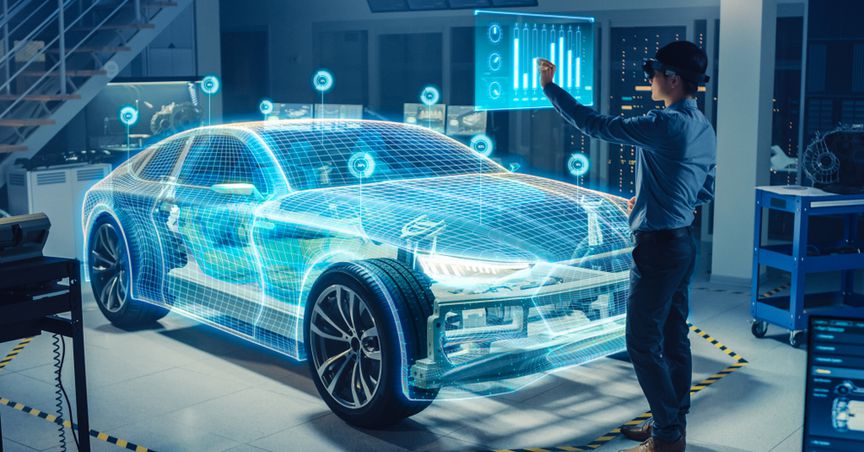10 Popular Car Myths You May Still Believe
In a small circle of experienced motorists, one could hear stories that would make hair stand on end. Myths pass by word of mouth from generation to generation. The Indy Auto Man car mavens refute the most popular of them.
1. Seat belts and airbags do more harm than good.
It has long been proven that seat belts considerably reduce the risk of serious injury during a crash and the likelihood of death, that is, almost half. Airbags are also more likely to save your life than cause your death. Volvo, the three-point seat belt inventor, makes some of the safest cars in the world, whether it is a spacious XC90, XC60, or XC40. However, seat belts and airbags must work together. In older vehicles that didn’t have airbags, the seat belts held you in a little tighter, which often resulted in chest contusions and sometimes broken ribs. In modern cars, the belt is designed to slow the initial motion of an impact, and the airbag does the final part of slowing the body. These functions work great together, but using them separately can be dangerous.
2. A car requires an oil change every 3-5 thousand miles.
If you are buying a vintage used car or OBS truck, you should provide it with super-regular maintenance and oil changes. In other cases, simply use the oil recommended by the manufacturer and do not exceed its change intervals.
3. Refueling a car with the engine running is safe.
Gasoline vapors from a running engine can ignite. Although the likelihood of a fire occurring during refueling is negligible, running the engine increases the chances of igniting gasoline vapors in the fuel system, fuel pump, etc. So, all other things being equal, experts would not recommend doing this.
4. The production of electric vehicles emits more CO2 than cars with internal combustion engines.
This myth sounds authoritative, but don’t let home-grown auto experts fool you. Indeed, the production of an electric car, on average, emits more carbon dioxide than a conventional car (mainly due to the batteries). But throughout their operation, petrol or diesel vehicles will far exceed the CO2 emissions associated with production. The electric car is still the environmentally friendly vehicle of the future, and as technology improves, its carbon footprint will only decrease.
5. Electric vehicle batteries are expensive to replace and have a short lifespan.
Electric powertrains and batteries in an electric vehicle are usually covered by a manufacturer’s warranty of up to eight years or 90,000 miles because they are reliable. At the same time, there are already statistics according to which some owners of EVs have driven hundreds of thousands of miles on them. So, even a used electric car may serve a new owner long enough.
6. Using cruise control in the rain is dangerous.
In inclement weather, a driver must be highly attentive in controlling the vehicle, but that doesn’t mean cruise control is dangerous. The myth is that it will spin the wheels to the set speed even if they lose traction, which is untrue. Modern cruise controls work in conjunction with traction and stability control systems. If the wheels slip, the system will cut traction or apply the brakes, automatically disabling cruise control. In this scenario, most car computers turn off traction first, making cruise control safe to use in the rain, and since you must keep your hands on the steering wheel, you will be in full control of the situation.
7. Electric vehicles often catch fire during an accident.
Electric vehicles are made from high-quality materials and typically have excellent insulation, which is very effective at protecting the batteries – the most flammable component. In addition, batteries are positioned low and reduce the risk of tip-overs – the most frequent cause of short circuits and damage to potentially fire-hazardous components. The absence of fuels and lubricants also obviously reduces the likelihood of fire.
8. Cars explode when bullets hit their gas tanks.
Despite spectacular scenes in movies and video games, shooting a gas tank does not cause an explosion. There is practically no oxygen in gas tanks, and ordinary bullets do not create sparks or fires. They will simply pass through the gas tank without igniting the fuel.
9. Driving with the pickup truck tailgate open reduces fuel consumption.
The idea that an open side of a truck, without covers and kungs, provides better aerodynamics and saves fuel is an absolute fiction. This changes the airflow for the worse and increases resistance.
10. A driver can drink coffee or sleep in a self-driving car.
Of course, autonomous vehicle technology has come a long way, but it still has much to overcome before it’s ready for use on public roads. Most of the newest self-driving cars can safely navigate highway traffic and even perform parking maneuvers. However, currently, only level 3 autonomy is more or less realistic, but it also requires drivers to be constantly vigilant and focused. After all, if something goes wrong, the driver will bear full responsibility for the consequences. Self-driving technology has not yet learned how to read traffic lights and signs, and it is certainly far from the stage where you can sleep behind the wheel.

